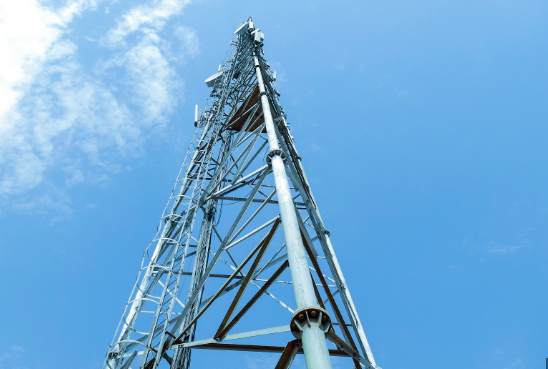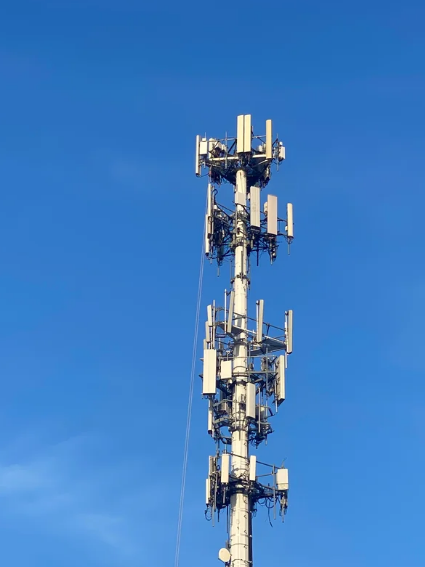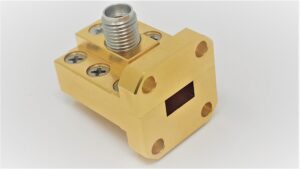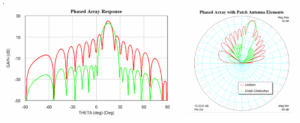Table of Contents
Frequency Range
C-band spans the 4.0 GHz to 8.0 GHz frequency range, with the ITU defining those for satellite communications between 3.7 GHz and 4.2 GHz. This range has been a very good balance between reliability of signal and bandwidth, and thus it has been quite popular for both commercial and military satellite communications. As in the case of satellite broadcasting, for instance, the frequency band used is between 3.7 GHz and 4.2 GHz. A typical satellite ground station transmitting signals in the C-band uses this range to ensure proper reception of the signal. Because of the low frequency and longer wavelengths, C-Band dishes usually range from 2.4 meters to 4.5 meters in diameter depending on the region and specific satellite service. These larger antennas help maintain signal integrity due to the lower data transmission rates in C-Band relative to higher-frequency bands such as Ku-Band.
In telecommunications, the range of 4.0 GHz to 4.2 GHz is used by many cellular backhaul networks, in which signal reliability and long-distance coverage are more crucial than high-speed data transmission. The power level for such ground stations generally ranges from 10 watts to 50 watts for uplink transmission, with some high-power stations going up to 100 watts for broadcasting applications. The trade-off here is that while C-Band provides relatively lower bandwidth-usually between 500 MHz to 1 GHz-it also ensures more stable connections over long distances, something particularly crucial in remote areas or for rural communication networks. The average signal loss in C-Band communications, especially in satellite links, is about 0.1 dB/km, which makes it way more resistant to atmospheric conditions compared with higher frequency bands that are susceptible to much greater attenuation from rain or snow.
Because the demand for 5G networks has grown significantly, the C-Band has become a key part of the 5G spectrum. The U.S. Federal Communications Commission has auctioned 280 MHz of C-Band spectrum, between 3.7-3.98 GHz, for the deployment of 5G. The total value of bids in this auction was $81 billion, reflecting the importance of these frequencies for mobile broadband. This portion of C-band is considered ideal for 5G networks because it offers wide coverage and high data throughput-a combination that presents an effective solution to expanding coverage both in urban and suburban areas. C-Band frequencies, for example, could provide speeds of as high as 1 Gbps for users under the best conditions; these make it suitable for very demanding applications, including HD video streaming and virtual reality. It is, however, much slower than the higher 5G frequency bands, including the 28 GHz millimeter-wave spectrum.

ITU Definition
The ITU defines the C-Band from 3.7 GHz to 4.2 GHz for satellite communications, but the exact range changes slightly depending on the purpose. This definition by ITU is very important in international regulation and coordination of the satellite and terrestrial networks to avoid interference between different systems. The 3.7 GHz to 4.2 GHz frequency range in satellite communications is used primarily for downlinks. In most cases, this uplink would lie between 5.850 GHz and 6.425 GHz, although there may be other segments within the C-band that can be utilized according to geographical allocations. This specific allocation for satellite communications guarantees global compatibility, especially for services such as DTH television broadcasting, wherein millions of users depend on satellite dishes for high-quality signals.
The definition of C-Band by ITU also plays an important role in the global regulation of wireless communications. For example, in the United States, the Federal Communications Commission (FCC) and the National Telecommunications and Information Administration (NTIA) work under the guidelines established by the ITU to allocate frequencies for both commercial and governmental purposes. The FCC has auctioned off portions of the 3.7 GHz to 4.2 GHz C-Band spectrum to commercial entities to support 5G mobile network expansion. Cumulatively, the U.S. government auctioned off 280 MHz of C-Band spectrum in 2021, amassing an astonishingly huge sum of more than $81 billion for it, thereby indicating the value held within this range of frequencies. This sale simply shows that the band is critical for cellular communication due to its balanced properties of good coverage versus speed to serve high-density urban, rural, and suburban regions with extended reachability.
At the level of technical specifications, ITU’s definition of C-Band for satellite services also responds to the need for reliable and long-distance communications. For example, satellite systems operating in C-Band are often made with larger antennas relative to higher-frequency bands to avoid signal loss. A typical C-Band receiving dish ranges from 2.4 meters to 4.5 meters in diameter, where signal attenuation due to rain and other weather elements is typically about 0.1 dB/km. This is a relatively low level of attenuation, making C-Band more suitable for transmission over long distances and in adverse weather conditions compared to higher frequency bands like Ku-Band (12-18 GHz) or Ka-Band (26.5-40 GHz), which are more susceptible to atmospheric interference. Therefore, C-Band still remains a favorable choice for satellite communication services in heavy rainfall areas or any other unfriendly environmental condition.

Telecommunication Use
From 3.7 GHz to 4.2 GHz, C-band plays a very important role in the telecommunication industry, especially in satellite communications, mobile backhaul, and broadband services. The most common applications of C-band include satellite communication systems, wherein C-band forms the backbone for a wide range of services. For instance, in satellite broadcasting, the frequency range from 3.7 GHz to 4.2 GHz is already in heavy use for downlinks, carrying signals from space down to consumer dishes. The size of such satellite dishes usually ranges from 1.8 meters to 4.5 meters in diameter, depending on the signal strength required and the user’s geographical location. Data transfer rates for C-Band satellite communications are generally lower compared to those of higher frequency bands; however, its ability to give consistent cover over long distances with less rain fade susceptibility makes it so important to residential and commercial satellite services.
C-Band frequencies in mobile telecommunications are increasingly used in the wider rollouts of 5G technology. For instance, in the United States, 280 MHz of the C-Band spectrum, running between 3.7 and 3.98 GHz, was auctioned off to 5G in 2021 by the Federal Communication Commission for the astonishingly high value of US$81 billion, indicating the real worth of these frequencies within modern wireless communication systems. For this reason, C-Band allows 5G providers to reach download speeds of as high as 1 Gbps if conditions are just right. That’s far better than the 4G LTE speeds, which were around 100 Mbps to 300 Mbps. While C-Band 5G doesn’t offer the ultra-fast speeds of millimeter-wave bands-such as 28 GHz-its combination of wider coverage and relatively high data throughput makes it ideal for urban and suburban areas, where demand is high for both coverage and capacity. But most MNOs have swiftly begun C-Band deployments for 5G, since it would allow them to deploy less dense networks at lower cost, without the very short ranges at much higher frequency bands that need more infrastructure.
C-Band plays a major role in mobile backhaul, or in other words, the communication links that connect cell towers to the core network, particularly where it is impossible to lay fiber optic cables. Microwave links using the spectrum of C-Band ensure reliable backhaul communications, especially in rural and remote areas. Data transfer rates for these microwave links normally range from 100 Mbps to 1 Gbps, depending on the distance between towers, antenna size, and specific equipment used. These links are normally designed for low-power operation-usually between 10 to 50 watts for ground stations-yet they are able to provide long-range communication with minimal signal degradation. The C-Band microwave system’s lower cost per gigabit compared to fiber-optic connections makes it particularly useful in scenarios where fiber is either too expensive to deploy or logistically challenging to install, such as in mountainous or geographically difficult regions.

Satellite Broadcasting
C-band has formed the backbone of satellite broadcasting over the years, especially when it comes to the distribution of television signals and other broadcast services. According to ITU, this frequency spans from 3.7 GHz to 4.2 GHz, and is widely utilized for downlinking signals from geostationary satellites to Earth-based receivers like satellite dishes. This range of frequency allows for high-quality transmission with relatively low levels of interference, especially in areas that have heavy rain or snow. In satellite broadcasting, the typical C-Band satellite dish used by consumers ranges from 1.8 to 4.5 meters in diameter, with larger dishes being used in areas with more severe weather conditions as a way to compensate for signal attenuation. The strength of the signal for C-Band broadcasting is around 50 dBW to ensure strong and reliable reception.
Global coverage: Because the beamwidth of C-band satellites is relatively wide, the satellites can deliver broadcast signals in large regions. A single satellite operating in the C-band frequency range can cover an area of several hundred kilometers in diameter, serving millions of users simultaneously. For example, in regions like sub-Saharan Africa, where terrestrial television infrastructure is limited, C-Band satellites have been instrumental in delivering television programming to remote villages and rural areas. In these areas, C-Band’s ability to transmit signals over long distances with minimal power loss is a key advantage. From a single satellite, the signals could travel as far as 500 kilometers, which is perfect to cover large, sparsely populated areas where terrestrial broadcast signals might not be effectively reaching.
The data transmission rates in C-Band satellite broadcasting are not as high as the Ku or Ka-Band systems; however, they are suitable for all broadcast television services. The data rates typically range from 20 Mbps to 200 Mbps, quite enough for both standard and high-definition broadcast television. For instance, C-Band technology in satellite-based delivery of HD content allows video bitrates up to 100 Mbps, which is more than sufficient for carrying several HD channels simultaneously. While newer technologies, such as DVB-S2, have increased the efficiency of satellite data transmission, the relatively lower bandwidth of C-Band-when compared to higher frequencies such as the Ku-Band, operating in the 12-18 GHz range-means it is less suited for the high-capacity needs of modern satellite internet services or ultra-high-definition video broadcasts (4K and 8K). However, for traditional television services, C-Band is still widely used and relatively cheap.
Commercial Uses
C-Band frequencies, especially between 3.7 GHz and 4.2 GHz, have wide and varied commercial applications other than satellite broadcasting and form a very important part of the telecommunications infrastructure around the world. One of the most significant commercial uses of C-Band is in the provision of satellite-based internet services, especially in areas where traditional broadband infrastructure, such as fiber optics or cable, is either unavailable or prohibitively expensive. The satellite industry players like Viasat and HughesNet have already provided C-Band frequencies to deliver broadband access to those places in North America, Latin America, and Africa where terrestrial communication is hardly an option.
In those areas, satellite broadband would be the main solution. C-Band systems can give download speeds from 25 Mbps to 100 Mbps, depending on the service package and geographic location, making it an option for consumers and businesses alike that rely on internet connectivity in these unserved areas. Cost: The cost of satellite-based internet services in C-Band usually ranges from $50 to $150 per month. The price varies based on the data usage limits, geographic region, and specific service provider offerings.
C-Band frequencies also find wide application in commercial fixed wireless communication links, whereby firms use microwave systems to transfer data over long distances without the need for expensive installations of fiber-optic cables. Such systems are utilized by businesses in transmitting data on a point-to-point basis between office buildings, manufacturing plants, or other commercial locations. Such applications ideally use the C-Band spectrum because it offers a good balance of reliability, a long-range transmission capability, and relatively lower installation and maintenance costs when compared to fiber-optic systems. Normally, microwave links in C-Band are able to support data rates from 100 Mbps to 1 Gbps; however, this depends on several limiting factors, such as link distance, antenna size, and equipment quality.
For example, a typical C-Band microwave system used for backhaul communication may call for an antenna of approximately 1.8 meters for a 100-kilometer link to maintain signal strength and quality. These radio links are most effective for those locations where fiber infrastructure installation is not viable due to cost factors or geographical constraints-for example, outlying industrial estates or particularly difficult terrain. The cost for establishing a C-Band microwave link can range from $10,000 to $50,000, depending on the equipment and installation complexity, but it is considerably more economical than fiber.
Another key commercial usage of C-Band frequencies is in the oil and gas industry: satellite communications using C-Band provide a reliable and secure method of communication for remote drilling sites and offshore platforms. Examples are offshore oil rigs that, due to the remoteness from coastal regions where most telecommunications infrastructure resides, use C-Band satellite services for transmitting data, maintaining contact with headquarters, or coordinating activities between sites. Data rates for such signals would be in the range of 64 kbps to 2 Mbps, depending on the kind of service employed, such as voice, video, or data. It is for this reason that C-Band is so valuable at offshore and remote sites, as it can view through storms or heavy rain that may render other communication methods useless.
Because C-Band satellites cover the entire globe, they facilitate communications without interruption, even in the most uninhabited areas. C-Band satellite communications are rather expensive and can be commercially used in industries related to oil and gas. Monthly subscription fees for high-capacity services can reach US$ 5,000 to US$ 20,000 depending on the data rate, location, and service provider.
Regulatory Boundaries
The regulatory boundaries for the C-Band frequencies, especially those within the 3.7 GHz-4.2 GHz mark, are drawn by a number of international and national bodies with a purpose to protect efficient usage without causing interference among various communication systems. In addition, at the global level, the ITU also takes the lead in defining the spectrum allocations and coordinating frequency use among different countries. ITU assigns the primary allocation to the 3.7 GHz to 4.2 GHz band for satellite communications, including up- and downlinks, although specific sub-bands differ in different regions due to conflict concerns with other services such as radar or terrestrial wireless communication. It also can be said that, at the same frequency, it is used principally for Commercial Satellite Downlink services in the 3.7 GHz to 4.2 GHz range; again, actual use and assignment would take place slightly different with different regulatory authorities within a country, except it harmonizes these bands across nations with a view to enabling cross-border communication and satellite coverage all around the world.
National regulatory authorities, such as the FCC in the US, implement specific policies within the broader framework of the ITU to allocate and manage the C-Band frequencies within their region. In the US, for example, the FCC is guided by the ITU’s guidelines on the use of the C-band spectrum and has traditionally allocated portions of the band for satellite services and fixed satellite systems. In 2020, the FCC initiated a major reallocation process where it auctioned off part of the C-Band spectrum-from 3.7 GHz to 3.98 GHz-to mobile operators for 5G use. The auction raised over $81 billion, highlighting a growing demand for mid-band spectrum for 5G services. In this regard, this reallocation included steps put in place by the FCC to ensure that satellite services were not disrupted, such as rules for clearing and relocating incumbent users in the 3.7 GHz to 4.2 GHz range. As such, this regulatory shift reflects one of the most dramatic and fundamental changes in how C-Band frequencies are allocated, balancing rapidly increasing demand for 5G spectrum with both mobile broadband needs and the requirement for satellite communication.
Other countries have also made similar readjustments in their C-Band spectrum allocations. In Europe, for instance, the European Commission has been working to align the single band of 3.6 GHz to 4.2 GHz for 5G services across its member states. The harmonization of the use of these frequencies by the EU aims to enhance spectrum efficiency and facilitate the cross-border deployment of 5G networks. The alignment has, however, been supported by the European Conference of Postal and Telecommunications Administrations (CEPT), which recommended that the 3.6 GHz to 3.8 GHz portion of the C-Band be dedicated for 5G mobile services while the 3.8 GHz to 4.2 GHz portion remains allocated for satellite communications. The transition from satellite services to 5G, under this regulatory approach, will be done in a manner not to cause undue disruption but meet the needs of mobile network operators who require mid-band spectrum for faster and more reliable services. In other parts of the world, such as parts of Asia and the Pacific, similar work has been ongoing to ensure efficient utilization of C-Band spectrum both for mobile and satellite communications.
Bandwidth Limits
The bandwidth limitations of C-Band, from 3.7 GHz to 4.2 GHz, pose significant implications on both satellite communications and terrestrial networks. In satellite communications, the available bandwidth in the C-Band will determine the number of channels that can be transmitted. This, in turn, directly impacts the capacity of the system in delivering data, voice, and television services. In contrast to the higher frequency bands of Ku-Band or Ka-Band, the C-Band has a relatively limited bandwidth, at around 500 MHz total usable bandwidth. Although this bandwidth may suffice for traditional satellite applications like broadcasting and point-to-point communication, it may be less capable of meeting modern high-speed data rate requirements associated with broadband internet and high-definition video. In the case of a standard C-Band satellite system, a transponder would be able to carry a bandwidth of 36 MHz, which amounts to a data throughput rate of roughly 50-100 Mbps, depending upon the modulation schemes and the other aspects. That will suffice for standard definition as well as some high-definition video broadcasting but does not meet newer services with faster data rates requirements, like satellite internet or 4K television.
As demand for more bandwidth and higher data rates increases, regulatory bodies are revisiting the allocation of the C-Band spectrum in order to meet the demands of both satellite and terrestrial communication services. One of the main drivers of change is the increasing demand for 5G networks that require large blocks of mid-band spectrum like that in C-Band. In the United States, the Federal Communications Commission (FCC) auctioned off 280 MHz of C-Band spectrum from 3.7 GHz to 3.98 GHz for mobile broadband use in 2021. It was a record-breaking amount exceeding $81 billion; such an amount clearly points to the value that this band range holds for the mobile operators who are seeking to extend their 5G networks. However, the reallocation of a part of the C-Band spectrum to 5G services has created the concern of the effect it will have on existing satellite operators, who depend on C-Band for important services. The FCC took measures to alleviate this situation by setting up a compensation fund of around $9.7 billion to support satellite companies in shifting to alternate frequencies or upgrading their infrastructure. All these notwithstanding, reduction of available bandwidth to satellite services may also limit the future capacity of satellite systems in offering high-quality high-data-rate services.
In C-Band, the design and efficiency of the satellite system are directly influenced by the bandwidth limits. While wide coverage with relatively large beams is achievable for satellites using C-Bands, narrow bandwidths mean a limited number of transponders for a given satellite. A common C-Band satellite typically can have 12-24 transponders, with every one able to deliver as much as 36 MHz of bandwidth. Given this heavy demand for bandwidth, a satellite operator will always be careful about allocating their scarce spectrum to achieve as high an efficiency in as many transponders as possible. Techniques like QPSK or 8PSK advanced modulation can be applied in order to increase data rates per channel. However, even with these techniques, the overall capacity of a C-Band satellite system is still limited compared to higher-frequency bands like Ku-Band, which typically provides 1-2 GHz of bandwidth, or Ka-Band, which can offer up to 2 GHz or more of bandwidth. This is one of the reasons why satellite internet services via C-Band are often slower and more expensive than those via higher-frequency bands that can support much higher data rates.
The bandwidth limits of C-Band also affect its commercial use in terrestrial wireless systems, especially for fixed and mobile backhaul. Fixed wireless systems using C-Band frequencies often provide data rates ranging from 100 Mbps to 1 Gbps, but the limited bandwidth available cannot scale to meet the needs of urban areas. Since demand for data transmission continues to grow in densely populated regions, C-Band’s narrow bandwidth is its limitation in providing enough capacity for everyone. For instance, a 100 MHz bandwidth allocation in C-Band may support up to 10,000 simultaneous connections at 10 Mbps. When more users require higher data rates or larger volumes of data, the system begins to struggle to deliver required capacity without significant investment in infrastructure upgrades. Compared with it, much wider bandwidths of up to 1 GHz can be offered in bands such as the 28 GHz millimeter-wave spectrum used for 5G, which means that a lot more users can be supported at higher speeds in a given area. That bandwidth limit of C-Band poses significant challenges to its adoption in next-generation mobile networks, particularly in urban areas, where demand for mobile data is growing exponentially.







